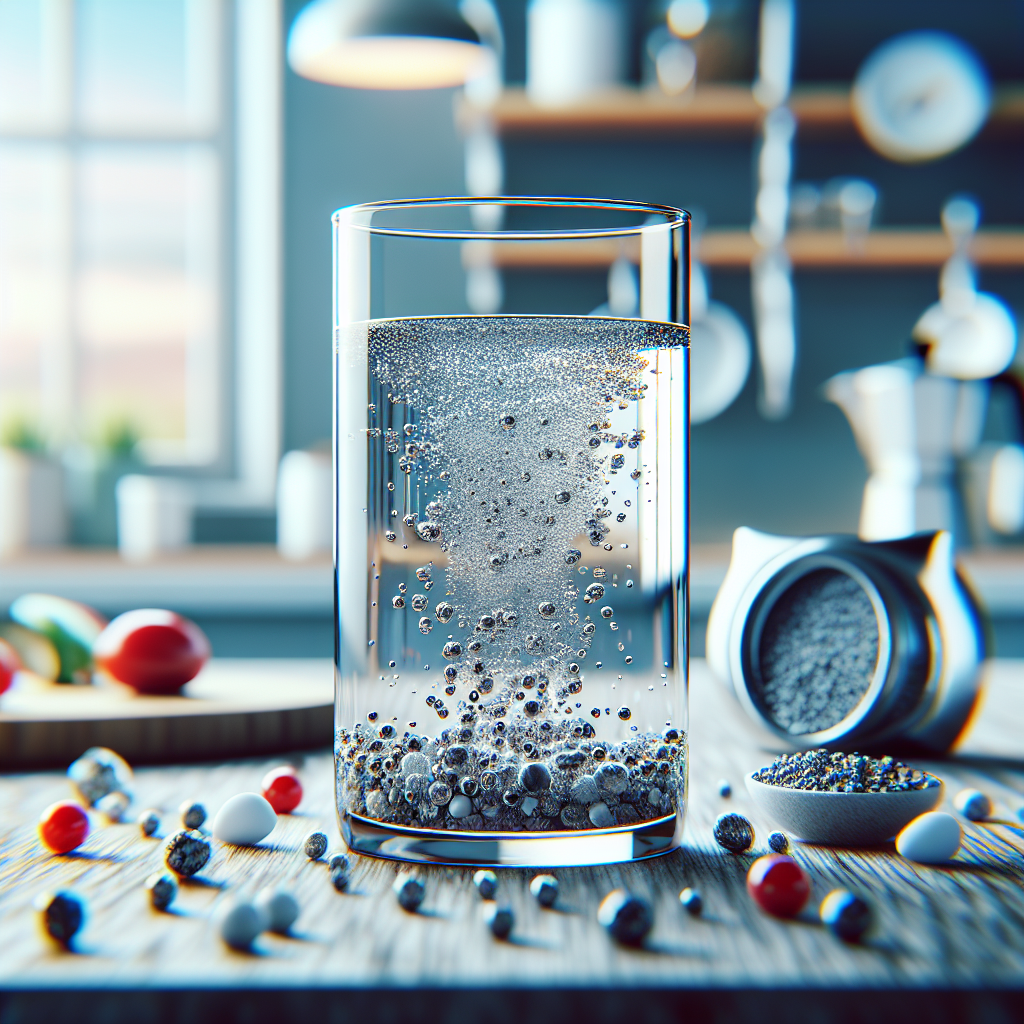The Hidden Dangers of High Iron and Manganese in Drinking Water: What You Need to Know
Water is an essential resource that we rely on every day, but what happens when the quality of our drinking water is compromised? High levels of iron and manganese in drinking water can pose serious risks to both health and infrastructure. Understanding these risks and how to effectively manage them is crucial for ensuring safe and clean water. In this blog post, we’ll explore the hidden dangers of high iron and manganese in drinking water and provide insights into maintaining excellent drinking water quality.
Understanding the Presence of Iron and Manganese in Water
Picture this: You wake up one crisp morning, bleary-eyed and in desperate need of coffee. You shuffle to the kitchen, pour yourself a mug straight from the tap, only to find your morning brew tastes strangely metallic. What’s going on? Enter: high iron and manganese in drinking water. These naturally occurring metals, found deep in the earth’s crust, have a sneaky way of slipping into our water supply, much to your taste buds’ dismay.
Iron and manganese are like the uninvited guests of the water world, crashing the pristine party that is your tap water. As water seeps through soil and rock, these metals don’t just wave and let it pass by – they hitch a ride, directly into the groundwater that feeds our drinking supply. You might wonder how common this is. Well, you’re not alone. According to the Government of Canada, these metals frequently pop up in Canadian water systems, especially in areas with high concentrations of minerals.
Interestingly, the presence of these metals isn’t just a matter of ruining your morning coffee. The World Health Organization reports that high iron and manganese have more dastardly effects – from discoloring your laundry (so that’s why your whites are more of a dingy grey!) to potential health risks when consumed excessively. Despite its stealthy nature, contamination from iron and manganese is no joke.
But don’t fret! While this might sound like a lot to soak in (pun intended), understanding the issue is the first step towards finding a solution. Think of iron and manganese as the unsung villains of the water world, and educating yourself about water quality can help you become the hero of your own hydrational harmony.
“The presence of naturally occurring metals in water sources prompts the need for consistent monitoring and management to maintain our health and safety.”
Health Risks Associated with High Iron and Manganese
When it comes to the quality of our drinking water, there’s more than meets the eye—or taste buds. Sure, “It tastes a bit like a rusty nail” is not quite the review you want for your tap water, but when it comes to high iron and manganese levels, the effects go far beyond flavor. While iron, in moderation, is a vital nutrient essential for oxygen transport in the body, too much iron can lead to digestive woes and a more concerning condition known as iron overload. This can result in fatigue, joint pain, and even damage to organs like the heart and liver over time.
Manganese, the quieter element of the pair, might not announce itself with rusty hues or metallic notes, but it can be insidious in its effects. According to a World Health Organization report, consuming large amounts of manganese over a prolonged period may lead to neurological issues, akin to the symptoms of Parkinson’s disease, such as tremors and poor motor coordination. It’s no wonder that health guides advise caution, despite manganese being another essential nutrient required in small doses for bone formation and metabolic functions.
To make sense of it all, consider the guidance offered by the Canada Drinking Water Guidelines, which provide clear parameters to ensure safety and health. Their recommendations help frame what constitutes a ‘safe limit’ for iron and manganese in drinking water, steering us clear from crossing into the red zone of health risks.
In the battle for better health, your water quality isn’t just a passive player—it’s a frontline warrior. Knowing the stakes, it’s critical to regularly test your water and consider appropriate filtration systems if your water source tips the scales into unsafe territory. With this knowledge, you’ll be better equipped to toast with your glass of water, slyly side-eyeing your clear and contaminant-free refreshment.
Drinking Water Standards and Guidelines in Canada
When it comes to ensuring the quality of our precious drinking water, Canada takes no chances. The nation’s drinking water standards are developed with an eagle-eyed focus on protecting public health while adhering to globally recognized benchmarks. For instance, the Canadian Drinking Water Quality Guidelines set by Health Canada lay down specific thresholds for iron and manganese levels to keep our water safe and potable.
First things first, let’s talk iron. Believe it or not, the defining line between beneficial and bothersome iron levels in tap water isn’t too wide. The guidelines recommend an aesthetic objective for iron at a concentration of 0.3 mg/L. Why, you ask? Well, higher iron levels can give your glasses a rusty makeover faster than you can say “professional interior design.” Jokes aside, this is about avoiding staining, taste, and odour issues, rather than toxicity.
Now turning to manganese, it’s the quiet cousin of iron with a mischievous side. According to the Canadian guidelines, the acceptable concentration is 0.12 mg/L. Above this, we’re dealing with more than just an off-taste or discolored water—a chronic exposure might even pose neurological risks, especially for children. As the saying goes, “better safe than sorry!”
“Canada’s drinking water guidelines are devised not only to uphold water quality but also to highlight the critical importance of regular monitoring and testing,” notes Health Canada.
Regular monitoring means you’d want to keep tabs on iron and manganese health effects by testing drinking water iron levels periodically. It’s much like checking your credit score before a major purchase—it keeps surprises at bay. For more info on living in water-conscious communities, hop over to Richard Wontorra – REALTOR® – 3 Percent Realty Atlantic Inc.. Understanding the guidelines, achieving peace of mind, and safeguarding your family’s health? Now that’s what we call a triple win!
Problems Created by High Iron and Manganese
When life gives you lemons, make lemonade; when water gives you iron, well, it might just give your sink an unexpected splash of reddish-brown hues! High iron and manganese concentrations in drinking water quality may lead to more than just stained plumbing fixtures. Imagine discovering your charming porcelain sink looks like it’s rusted itself into an art project overnight. It’s like your pipes decided to join the graffiti movement, right?
But let’s not stop at aesthetics. The effects of high iron and manganese extend far beyond colorful bathroom expressions. Picture this: You’re parched, ready to guzzle down a glass of refreshing water, only to be greeted by a metallic taste that can easily rival the tang of a spare change stash. Yes, that metallic undertone isn’t just quirky; it reflects the presence of these notorious metal contaminants in water.
Additionally, there’s the somewhat serious issue of sludge build-up. Over time, iron and manganese can accumulate within water systems, leading to blockages that disrupt water flow. According to a study by the University of Massachusetts Amherst, “iron bacteria, which thrive in iron-abundant environments, can corrode pipes, further aggravating the problem by creating buildups and reducing water flow” (UMass Extension). This is certainly not the type of pipe dream anyone envisions.
But why is this important for homeowners and real estate enthusiasts? Beyond the obvious inconvenience, high concentrations of these metals can deter property charmers, much like a creaky floorboard or a leaky roof. Improving water quality and taste becomes an essential journey, not just for the sake of quenching thirsts but to prevent strange stains and odd aftertastes from hampering the homely allure.
Effective Treatment Solutions
Treatment for iron contamination and methods to reduce manganese levels are crucial for maintaining water quality. Options such as iron water filtration systems, manganese removal techniques, and home water filters specifically designed for iron and manganese can greatly mitigate these issues. We’ll explore various iron and manganese removal processes and the best high manganese water solutions for both residential and municipal applications.
Monitoring and Maintaining Water Quality
Regular monitoring of iron levels in tap water and manganese concentration in drinking water is essential to ensure safety. This section will cover the best practices for monitoring, guidelines for iron levels in water, and suggestions for high iron manganese solutions to maintain a safe water supply.
Conclusion: Ensuring Safe Drinking Water
The presence of high iron and manganese in drinking water can pose significant challenges, but with proper awareness and action, these can be effectively managed. By understanding the sources, risks, and solutions available, we can work towards ensuring safe drinking water for everyone. Regular testing, adherence to guidelines, and appropriate treatment methods are key steps in alleviating the issues posed by these metals.


